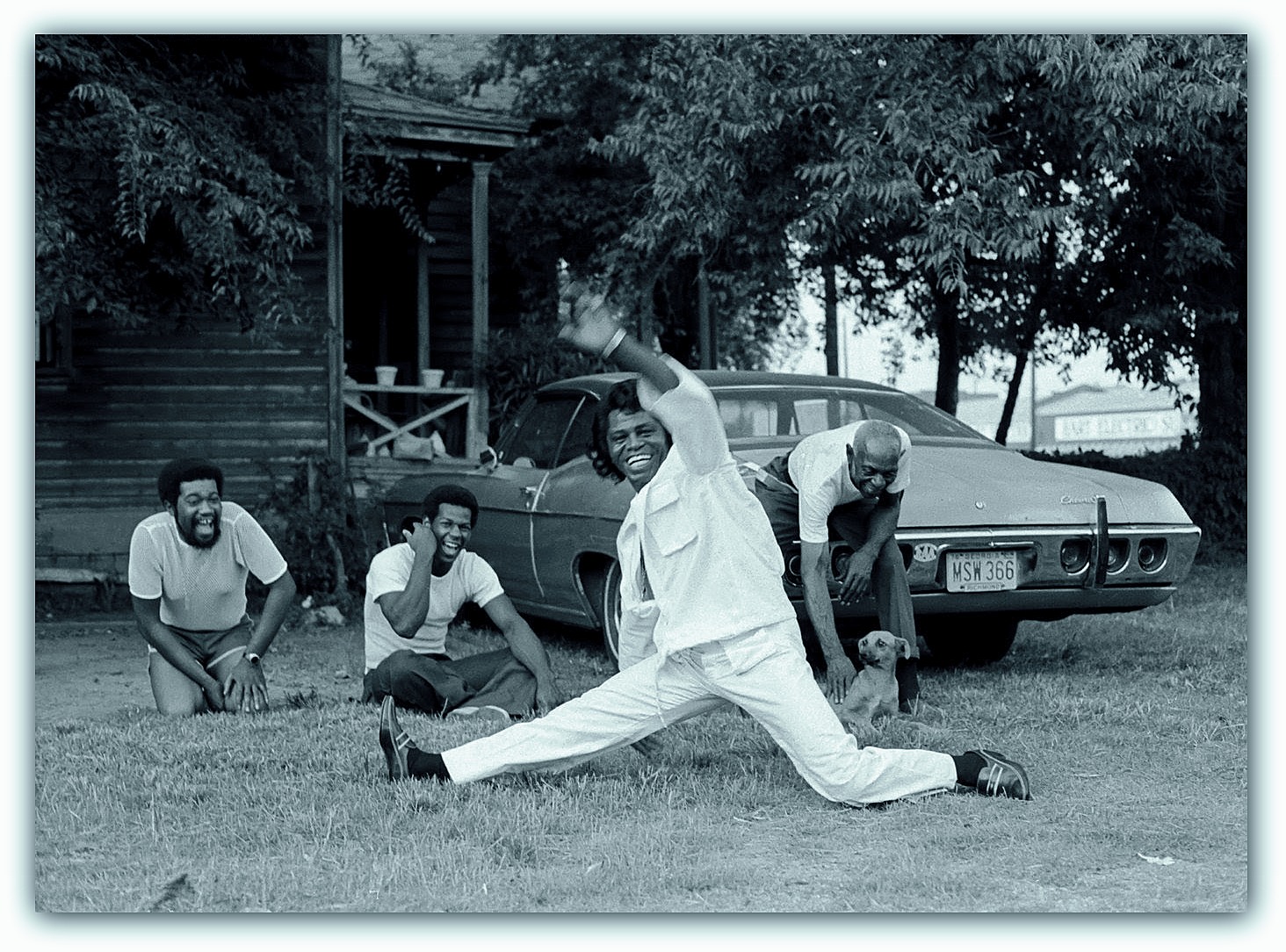THE EAGLES / THE DRIFTERS / THE DOORS / THE CLASH / THE BYRDS / THE BEATLES
THE BEACH BOYS / THE BAND / THE ALLMAN BROTHERS BAND / TALKING HEADS
STEVIE WONDER / SMOKEY ROBINSON AND THE MIRADES / RUN-DMC
SIMON AND GAFUNKEL / SAM COOKE / SLY AND THE FAMILY STONE
BOOKER T. AND THE MGS / BOB MARLEY
&&&&&&&&&&&&&&&&&&&&&&&&&&&&&&&&&&
$ By Rick Rubin $
In one sense, James Brown is like Johnny Cash. Johnny is considered one of the kings of country music, but there are a lot of people who like Johnny but don't like country music. It's the same with James Brown and R&B. His music is singular — the feel and tone of it. James Brown is his own genre. He was a great editor — as a songwriter, producer and bandleader. He kept things sparse. He knew that was important. And he had the best players, the funkiest of all bands. If Clyde Stubblefield had been drumming on a Motown session, they would not have let him play what he did with James on "Funky Drummer." James' vision allowed that music to get out. And the music always came from the groove, whereas for so many R&B and Motown artists at the time it was more about conventional songs. James Brown's songs are not conventional. "I Got You," "Out of Sight" — they are ultimately vehicles for unique, even bizarre grooves.
The first big record in hip-hop that used a Brown sample was Eric B. and Rakim's "Eric B. Is President." That opened the floodgates for people to sample Brown. I can't remember ever using a James Brown sample on my early records with LL Cool J or the Beastie Boys, but I wanted to make records that felt as good as Brown's, and I didn't want to do it by sampling or copying him. For me, it was about understanding the feeling you get when you listen to those grooves, figuring out how to achieve that with drum machines.
That feeling was something that the Red Hot Chili Peppers and I worked on for BloodSugarSexMagik. We used Brown's idea that all the musicians didn't have to be playing at the same time. Let the bass have its moment; don't be afraid to start a song with just guitar or break it down to just drums and guitar. Those are the sort of dynamics you hear on Brown's records.

I remember going to Minneapolis to visit Prince years ago, sitting in an office waiting for him — and there was an endless loop of James Brown's performance in the 1964 concert film The T.A.M.I. Showrunning. That may be the single greatest rock & roll performance ever captured on film. You have the Rolling Stones on the same stage, all of the important rock acts of the day — and James Brown comes out and destroys them. It's unbelievable how much he outclasses everyone else in the film.
I first saw James Brown around 1980, between my junior and senior years in high school. It was in Boston. It was in a catering hall, with folding chairs. And it was one of the greatest musical experiences of my life. His dancing and singing were incredible, and he played a Hammond B3 organ tufted with red leather, with "Godfather" in studs written across the front.
Regardless of what went on in his personal life, his legacy is secure. He certainly did things along the way where you can't help wondering, "What's going on?" But the good stuff comes from these one-of-a-kind people. These people are just touched by God. They are special. And James Brown is one of them. His legend will loom large, because the rhythm of life is in there.
Rollingstone















